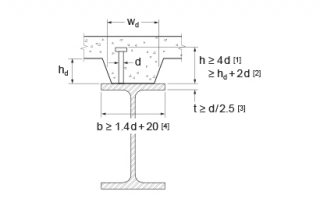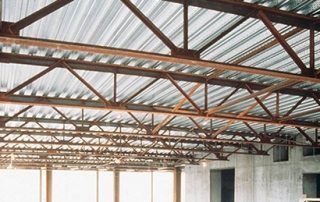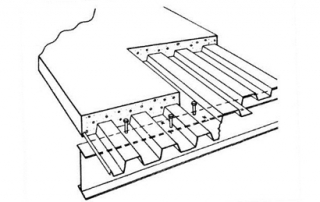Shear Stud Detailing
CSA S16-14 requirements for shear stud detailing aim mainly at ensuring that the studs will reach their design capacity as the composite member reaches its ultimate load. The accompanying figure shows a steel deck rib of average width, wd, and height, hd, supported on a girder with the deck ribs parallel to the girder. The headed [...]



